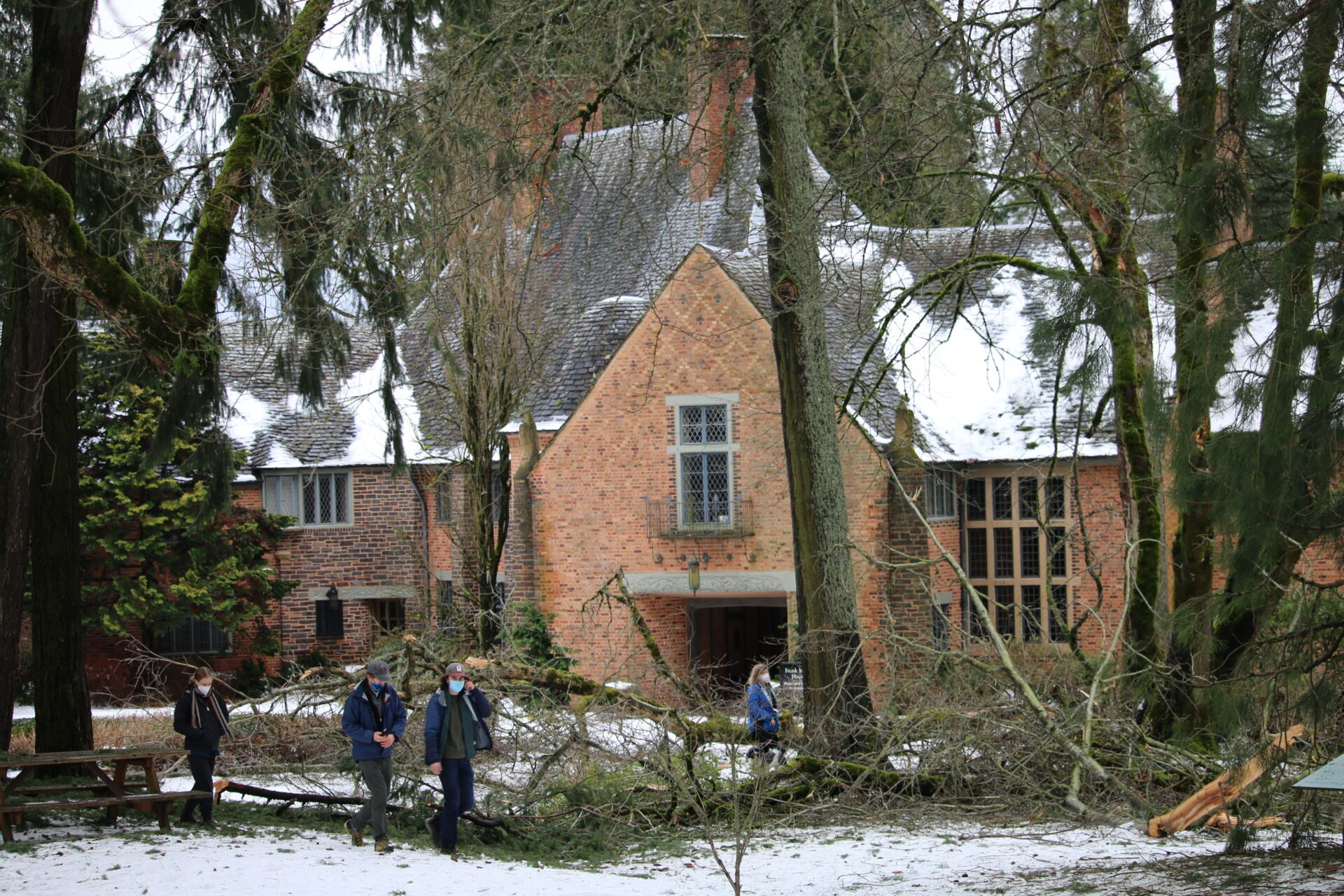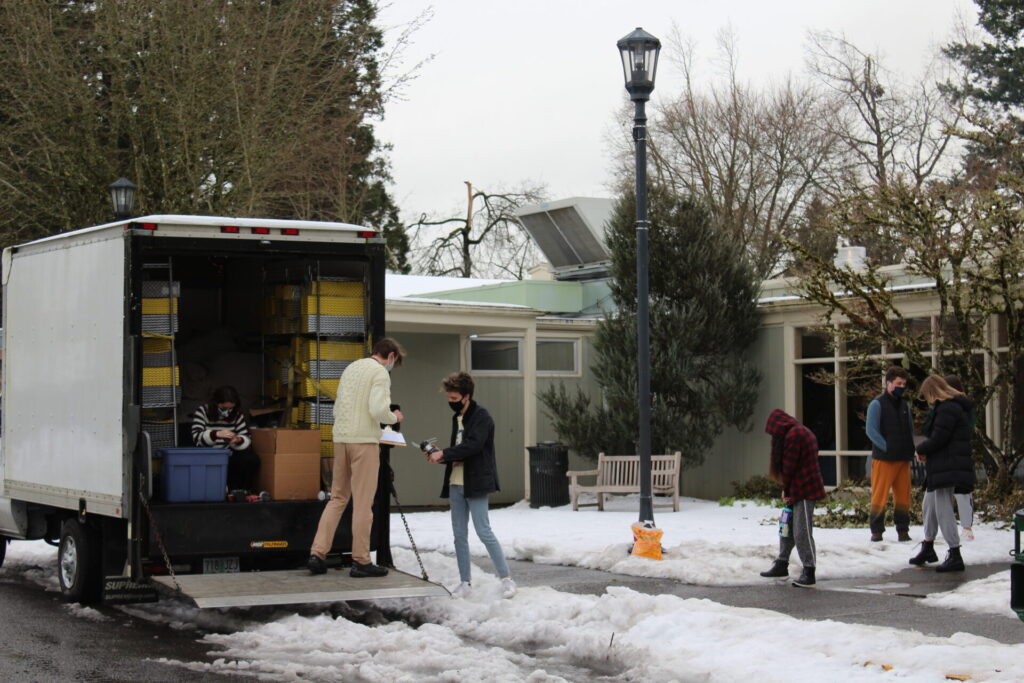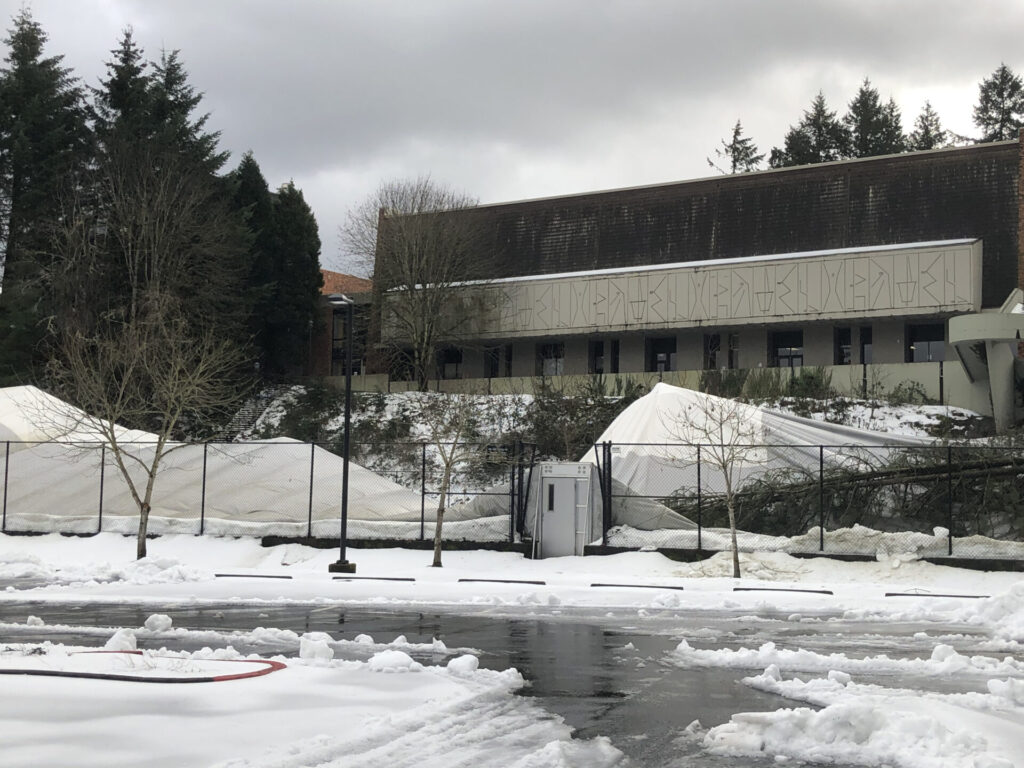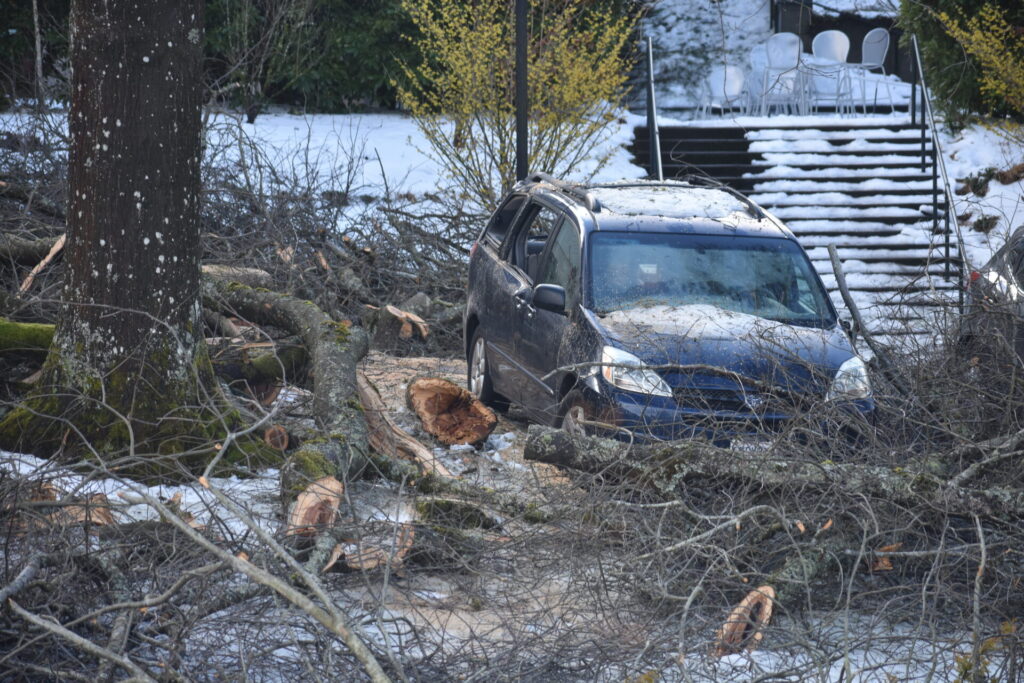
After several days of heavy snow and freezing rain, the Lewis & Clark community awoke on Feb. 15 to significant campus damage after a historic ice storm the night before. The crisis was made worse by power outages that impacted LC and over 300,000 other Portland residents.
Oregonians joined hundreds of millions of North Americans in a week of record-breaking freezing temperatures, snow and ice.
Downed trees and limbs fell atop dozens of vehicles and against buildings, and many campus pathways were blocked by debris. The LC Tennis Dome, located behind Pamplin Sports Center, collapsed under a fallen tree and the weight of snow and ice. Roof damage and water leaks were reported in some facilities, including Fields Dining Hall.
For less than 24 hours, all LC campuses were without electricity and heating. According to a bulletin sent by the college, Portland General Electric President and CEO Maria Pope personally assured President Wim Wiewel that returning power to Palatine Hill was a priority. Electricity returned to parts of campus at 9:33 p.m. on Feb. 15, around 18 hours after it first went out.
On-campus students were encouraged to congregate in Templeton Campus Center, which maintained electricity and heat through a generator. Hundreds of sleeping bags were available to students that did not have enough blankets or appropriate winter attire. Students congregated within Templeton to connect to the internet, pick up meals and warm up. However, in an email, students were instructed to “restrict use of Templeton to thirty-minute increments to allow for use by other students, and be mindful of maintaining social distancing.”
Many students were unaware that Templeton had electricity and dining services were not discontinued due to the storm. Because internet services and electricity were out, such information provided by the college primarily spread through word of mouth. Cellular service was spotty throughout the storm and seemed to deteriorate as weather worsened, according to students sheltering in Templeton.
Several students reported not being fed an adequate amount by Bon Appétit as a long line wrapped in and around Templeton. Since most food delivery services could not operate in the winter weather and students are discouraged from traveling off campus, an alternative food source was not easily accessible. Community members that traveled to the Burlingame Fred Meyer for food and supplies were faced with limited options. All refrigerated and frozen foods were unavailable for purchase and many non-perishables were sold out.
Noah Goldberg ’24, a resident of Copeland Hall, learned of Templeton’s status as a gathering place through a friend. He, like many students, did not receive the college’s emails and text messages due to the power outage and LC’s notoriously poor cell service.
“I woke up to darkness,” Goldberg said. “I grew up in Costa Rica and there were a lot of power outages. I was a little bit equipped to deal with this, but it was still kind of nerve-racking.”
On Feb. 15 and 16, all campus activities, remote and in-person, were canceled. Only essential personnel were permitted to travel to campus. While Palatine Hill regained electricity on Feb. 15, hundreds of off-campus students, staff and faculty were without power remained in a blackout for days longer. The Pioneer Express resumed operations on Feb. 15 once ice significantly melted and roads were safe for travel.
Many community members were stunned to see the felled Tennis Dome, one of the most visible casualties of the ice storm. According to the athletic department, a hurricane resistant foundation housed the Tennis Dome. However, the support structure of the exterior fabric could not withstand a fallen tree and days’ worth of heavy precipitation. In an email statement, Head Men’s & Women’s Tennis Coach Jimmy Chau expressed dismay over the Tennis Dome’s collapse.
“We’re definitely saddened that the weather has damaged the dome along with the power outage that is impacting the whole community,” Chau said. “Tennis means so much to our student-athletes and campus as a whole, and we have that top of mind as we focus on what we can do over the coming weeks and months. Our community’s safety is paramount and we will do our best to move forward with an experience that we’re all proud to be a part of.”
For several days, employees of A&A Maintenance, Bon Appétit, Campus Safety, College Outdoors and the Division of Student Life tirelessly worked to address the many emergencies that these storms caused. After clearing roads of ice, snow and debris, the college announced that the undergraduate and law campuses would reopen to community members on Feb. 17. The Graduate School of Education and Counseling remained without power at the time of publication. Much of the damage will require ongoing repair as Palatine Hill recovers from five days of record-breaking winter weather.
In an email statement, Director of Public Relations Roy Kaufmann, acting as a spokesperson, described the damage and the efforts of LC’s support staff.
“It is clear that there is extensive damage to campus trees and to the tennis dome,” Kaufmann said. “We have also noted damage to various roofs. A full assessment, including estimate of remediation costs will take at least several weeks. Facilities staff did a phenomenal job prepping for the weather forecast and responding to the various issues that arose.”
Subscribe to the Mossy Log Newsletter
Stay up to date with the goings-on at Lewis & Clark! Get the top stories or your favorite section delivered to your inbox whenever we release a new issue.




Leave a Reply